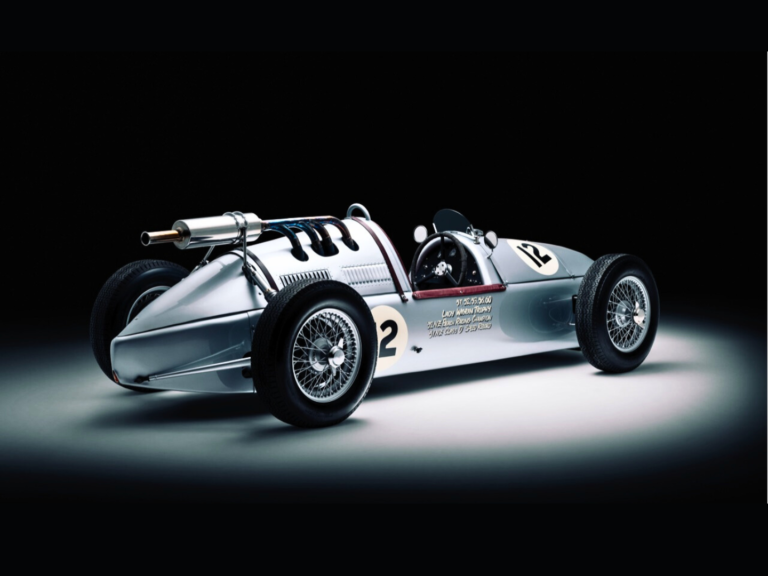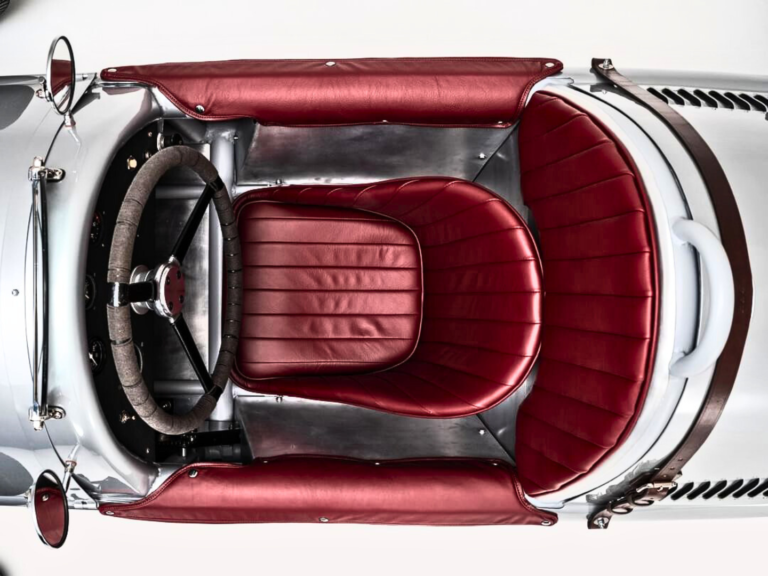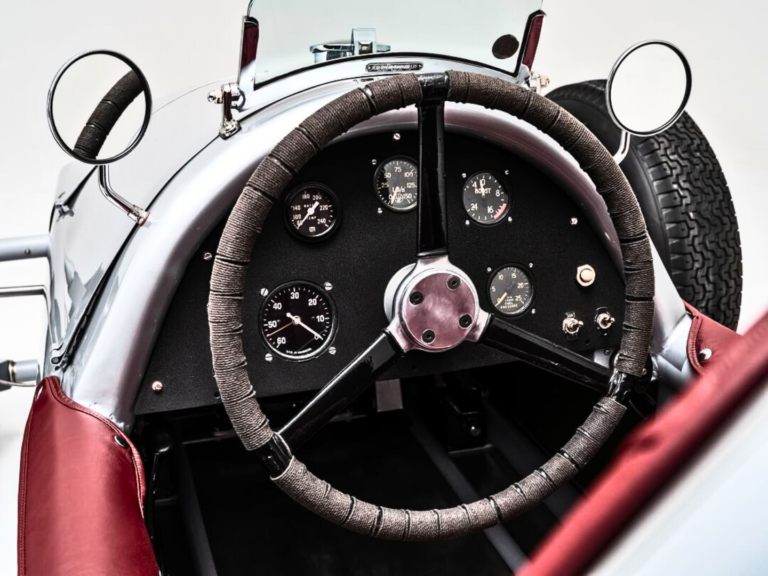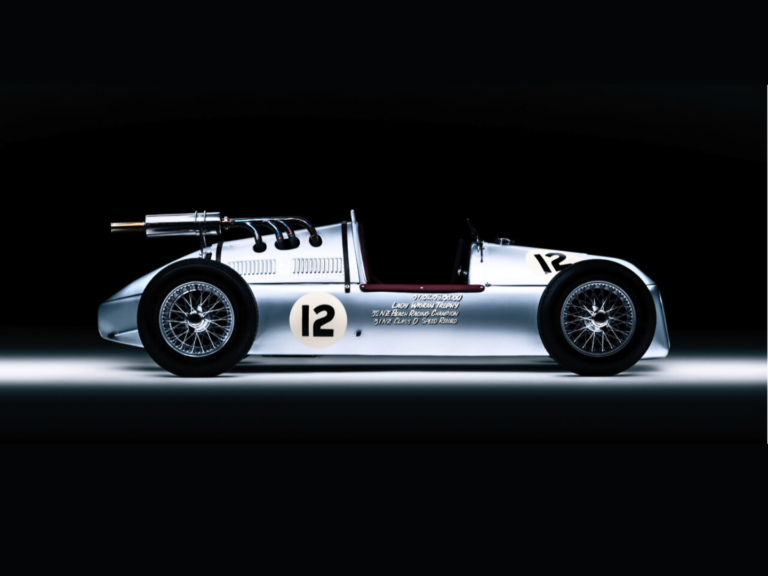The RA4 Racing Car, renowned for its exceptional performance on the track, incorporates luxury and comfort into its design with Crest’s Vele Ruby leather in its interior, upholstered by CustomStitch’d. This prestigious choice of material not only enhances the aesthetic appeal of the cockpit but also provides a touch of elegance and refinement to the racing experience.
This was an important part of New Zealand single-seat racing history from the 1950s, and one of five or six innovative single-seaters built by Hec Green and Jack Brewer, based on WW2 German designs, secured from the UK MOD.
History:
The RA4 Vanguard was built in 1950/ 51 in Christchurch New Zealand. It first appeared at the 1951 Lady Wigram International meeting at Christchurch. Moreover, the design was entirely revolutionary for a GP car with a mid-engine configuration. This was only seen in the new air cooled 500cc Formula 3 cars, at that time.
Furthermore, the engine was based on a modified Standard Vanguard. This includes larger head studs, cross drilled crankshaft, and a Hec Green designed and ground camshaft. It was fed and supercharged via a pair of SU carburetors through an aircraft cabin blower chain. This was driven through front of the crankshaft to provide 14 pounds of boost. Fuel was a methanol blend, with the engine giving over 200bhp and detonation was helped by water injection. The transmission was a 3-speed sequential transaxle of their own design and manufacture. However, this proved well up to the task and is still in the car today.
Additionally, the front suspension was as used by Auto Union but sprung by rubber shock cords. This is a medium that was extensively used in aircraft landing gear. The rear suspension was an unusual low pivot swing axle arrangement and springing was by Hydraulic oleo struts from the tail wheels of P40 Kittyhawk fighter aircraft. Adjustments could be made from the cockpit via a system of pulleys and levers.
The car performed well (despite lack of development) at many International and local meetings in NZ from 1951 through until 1960. Evidently, the RA4 is without doubt one of the most revolutionary post-war Grand Prix cars.
 Our use of cookies
Our use of cookies 


